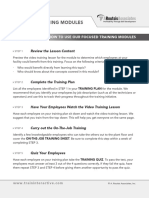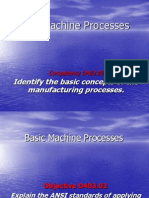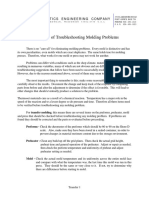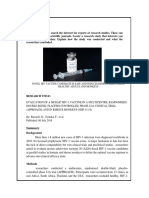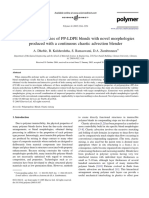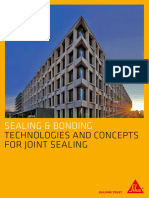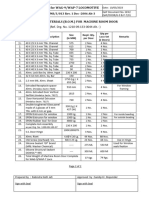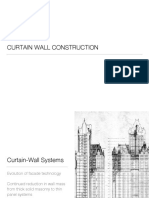0% found this document useful (0 votes)
519 views4 pagesCast & Blown Film Extrusion Guide
This document provides a troubleshooting guide for cast film and blown film extrusion processes. It lists common problems encountered in film extrusion such as draw resonance, film blocking, deposits on chill rolls, edge curl, bubbles in sheet, dull surfaces, and more. For each problem, it identifies potential causes and recommended solutions to address the issue. The guide is intended to help operators identify and resolve quality problems that may occur during extrusion of cast or blown plastic films.
Uploaded by
Cindy GallosCopyright
© © All Rights Reserved
We take content rights seriously. If you suspect this is your content, claim it here.
Available Formats
Download as DOCX, PDF, TXT or read online on Scribd
0% found this document useful (0 votes)
519 views4 pagesCast & Blown Film Extrusion Guide
This document provides a troubleshooting guide for cast film and blown film extrusion processes. It lists common problems encountered in film extrusion such as draw resonance, film blocking, deposits on chill rolls, edge curl, bubbles in sheet, dull surfaces, and more. For each problem, it identifies potential causes and recommended solutions to address the issue. The guide is intended to help operators identify and resolve quality problems that may occur during extrusion of cast or blown plastic films.
Uploaded by
Cindy GallosCopyright
© © All Rights Reserved
We take content rights seriously. If you suspect this is your content, claim it here.
Available Formats
Download as DOCX, PDF, TXT or read online on Scribd
/ 4

